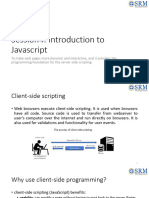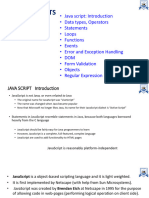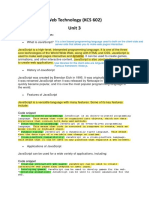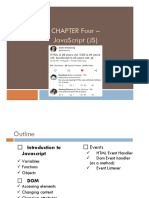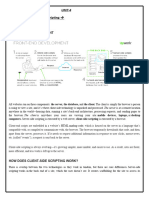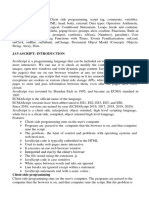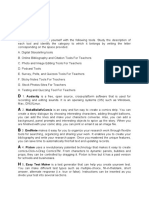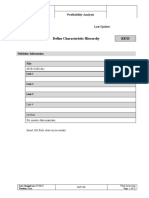0% found this document useful (0 votes)
26 views71 pagesAdvancec Javascript
Chapter 3 covers advanced JavaScript concepts, including its features, types of scripting, and the use of objects. It explains client-side and server-side scripting, looping statements, and the Document Object Model (DOM). Additionally, it discusses built-in objects like String, Math, Date, and Array, along with their properties and methods.
Uploaded by
p21128606Copyright
© © All Rights Reserved
We take content rights seriously. If you suspect this is your content, claim it here.
Available Formats
Download as PDF, TXT or read online on Scribd
0% found this document useful (0 votes)
26 views71 pagesAdvancec Javascript
Chapter 3 covers advanced JavaScript concepts, including its features, types of scripting, and the use of objects. It explains client-side and server-side scripting, looping statements, and the Document Object Model (DOM). Additionally, it discusses built-in objects like String, Math, Date, and Array, along with their properties and methods.
Uploaded by
p21128606Copyright
© © All Rights Reserved
We take content rights seriously. If you suspect this is your content, claim it here.
Available Formats
Download as PDF, TXT or read online on Scribd
/ 71






